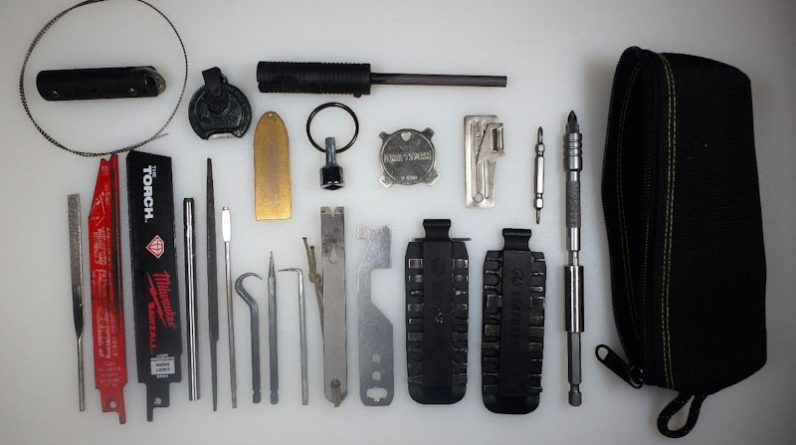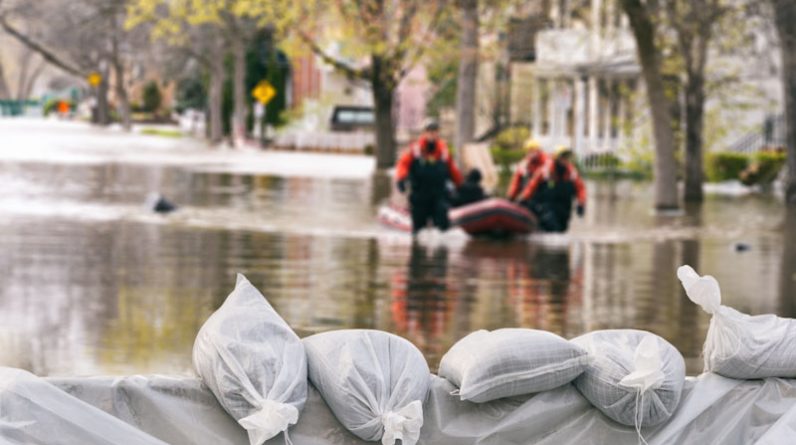In an era marked by an increasing fascination with doomsday scenarios and the allure of self-sufficiency, survivalism has found a place in the public consciousness. However, amid the surge of interest, a dangerous phenomenon has emerged – the propagation of survival myths that could, ironically, jeopardize the very lives they intend to protect.
Media sensationalism and self-proclaimed preppers and survivalists eager to share their expertise have become inadvertent spreaders of misinformation, leading to a cascade of misconceptions that can put lives in peril. Survival myths often gain traction quickly, perpetuated by well-intentioned enthusiasts or those seeking to capitalize on the growing interest in self-reliance.
The danger lies not only in the myths themselves but in the false sense of security and knowledge they provide to individuals who buy into them. It’s a perilous scenario where misguided beliefs, rather than enhancing survival instincts, might lead individuals astray in the face of genuine threats.
As someone who has observed these myths gaining roots in the minds of people, including those genuinely interested in preparedness, it’s crucial to address each of these misconceptions and reveal the truth behind them. By doing so, we hope to bridge the gap between sensationalized notions of survivalism and the practical knowledge needed to navigate real-world challenges effectively.
In an era where uncertainty seems to loom on the horizon, it is more critical than ever to distinguish between exaggerated survival fantasies and the pragmatic skills and knowledge necessary for genuine preparedness. So, let’s unravel the truth behind survival myths, empowering individuals to make informed decisions that could be the difference between life and death in a survival situation.
Your neighbors will pull together to help and save the neighborhood
One of the pervasive survival myths that has gained significant traction is the notion that, in times of crisis, communities will unite, and neighbors will work together for the common good. This romanticized belief suggests that a collective effort will emerge, transforming neighborhoods into bastions of support and solidarity. Unfortunately, reality paints a different picture.
History has shown that when faced with extreme circumstances, the layer of civility can rapidly erode, revealing a darker, more primal side of human nature. In dire situations, the “every man for himself” mentality often prevails, and the trust we place in our neighbors may crumble under the weight of survival instincts.
The adage “desperate times call for desperate measures” comes to mind, illustrating how individuals, even those known for their kindness, can be driven to extreme actions when their own survival is at stake.
The camaraderie that may have characterized communities in the past is increasingly elusive in a modern society marked by individualism and a race to the top. The belief that your neighbors will automatically come together to save the neighborhood is a dangerous assumption, especially in an era where self-preservation often takes precedence over communal well-being.
In the realm of prepping, it’s essential to recognize that relying solely on a collective effort may leave you vulnerable. Instead, the pragmatic approach is to bet on yourself and your immediate circle.
While building a community network is not discouraged, the myth of widespread communal support should be debunked, urging individuals to prioritize their own preparedness and that of their close-knit connections.
In times of crisis, self-reliance becomes a crucial factor, and understanding the limitations of relying on the broader community can mean the difference between survival and succumbing to the harsh realities of a crisis.
Debunking the illusion of tool and gadget overload
In the world of prepping, there’s a common misconception that a well-stocked arsenal of tools and gadgets is the key to surviving any crisis. Many enthusiasts embark on their preparedness journey with the belief that having an extensive collection of gear will provide a sense of security and readiness. However, this approach is not only flawed but can also lead to wasteful spending and a false sense of preparedness.
The impulse to acquire a plethora of tools and gadgets is often fueled by a desire for immediate peace of mind. Preppers may succumb to marketing schemes, believing that by amassing every conceivable item, they are fortifying themselves against the unknown. This myth fails to acknowledge that effective preparedness goes beyond a stockpile of equipment.
Firstly, this mindset can result in significant financial strain. Purchasing items you don’t truly need can deplete your resources, especially when driven by impulsive buying trends and marketing tactics. Additionally, accumulating excess gear may lead to storage challenges, with valuable space taken up by items that may never see practical use in a real crisis.
Furthermore, the act of buying tools and gadgets can distract from a more critical aspect of preparedness – skill development. Owning a vast array of tools is of little use if one lacks the knowledge and proficiency to use them effectively. Investing time in research and understanding the full scope of a tool’s capabilities is vital. Rather than acquiring multiple items that serve the same purpose, consider investing in multi-purpose tools and dedicating time to master their functionality.
In essence, the myth that an abundance of tools guarantees survival overlooks the importance of practical skills and knowledge. Building a foundation of competence in using essential tools is far more valuable than accumulating an excess of gadgets that may only serve as expensive decorations in times of crisis.
The key lies in a balanced and informed approach to prepping, where the emphasis is on honing skills and acquiring tools judiciously, ensuring they align with genuine needs rather than succumbing to the allure of excessive gadgetry.
Dispelling the illusion of endless supplies for survival
Amid the enthusiasm for prepping, a prevalent myth suggests that by amassing an extensive stockpile of food and supplies, one can ensure perpetual survival. While theoretically possible for those with substantial financial resources, this myth overlooks practical challenges and the inherent limitations of a strategy solely dependent on stockpiling.
The assumption underlying this myth hinges on the availability of stores and a lack of high demand for essential items when a crisis unfolds. However, reality often deviates from this ideal scenario. In times of genuine crisis, stores may be inaccessible, or the demand for critical supplies can skyrocket, rendering the notion of perpetual readiness through buying alone obsolete.
Furthermore, the fallacy lies in overlooking the perishable nature of many food items. Even with the best intentions, stored provisions can spoil if not properly preserved. Additionally, the risk of theft or unforeseen circumstances that could deplete your supplies adds an element of uncertainty to the equation. True preparedness extends beyond the act of acquiring goods; it involves safeguarding those items to ensure their availability when they are most needed.
Rather than succumbing to the impulse of continual buying, a more pragmatic approach involves considering what to do when supplies inevitably run out. This shift in focus prompts individuals to acquire essential survival skills, such as learning how to grow or procure food in their specific environment. Understanding the feasibility of sustaining oneself beyond the initial stockpile is paramount for long-term survival.
Evacuating guarantees safety
In the realm of emergency preparedness, a prevalent myth centers around the belief that one can easily attain safety by evacuating when faced with a crisis. Contrary to this simplistic notion, effective evacuation, or “bugging out,” demands meticulous planning and extends far beyond the impulse to hop into a vehicle and head to a designated location.
The fallacy lies in the assumption that merely having an evacuation plan in place is sufficient for ensuring safety. In reality, successful evacuation requires a multifaceted approach. Firstly, having a suitable vehicle is crucial, but its effectiveness hinges on meticulous maintenance and the driver’s familiarity with its operation. Knowing what to do if the vehicle breaks down becomes paramount, as mechanical failures can turn a seemingly straightforward evacuation into a life-threatening situation.
Furthermore, the road to safety may pose unforeseen challenges beyond vehicle issues. Planning alternative routes, strategizing for potential roadblocks, and preparing for the possibility of continuing on foot or using alternative modes of transportation are all integral aspects of a comprehensive evacuation plan. Understanding the potential obstacles that could arise during the journey is essential for adapting and ensuring a safe passage to the designated location.
Bugging out into the woods is like an extended camping vacation
A common misconception prevalent in survivalist circles is the belief that bugging out into the woods is akin to embarking on an extended camping vacation. This myth oversimplifies the challenges of long-term survival in a wilderness setting.
Living off the land poses numerous difficulties, from sourcing clean water and finding suitable shelter to navigating the intricacies of food procurement. Most people are unprepared for the drastic change in the environment that the wilderness demands, including the physical and mental toll of daily survival.
I can live off the land because I have the right knowledge
A prevailing myth in the prepping community is the belief that possessing the right knowledge equates to the ability to live off the land successfully. While knowledge is undoubtedly a crucial component, the misconception arises when individuals assume that theoretical understanding alone is sufficient for sustaining oneself in the wild.
This myth overlooks the unpredictable challenges nature can present and falsely instills confidence in the ability to grow food solely based on documented processes and acquired knowledge. Survivalists must recognize that living off the land is not a straightforward endeavor and demands a practical, hands-on approach beyond theoretical knowledge.
Concluding
Dispelling survival myths is crucial for fostering a more realistic and effective approach to preparedness. As we navigate the nuanced terrain of survivalism, acknowledging the complexities and challenges associated with each myth empowers individuals to develop well-rounded, practical strategies.
It is through a combination of knowledge, skills, and adaptable approaches that true preparedness emerges, offering a more resilient foundation in the face of the unpredictable and dynamic nature of survival scenarios.









